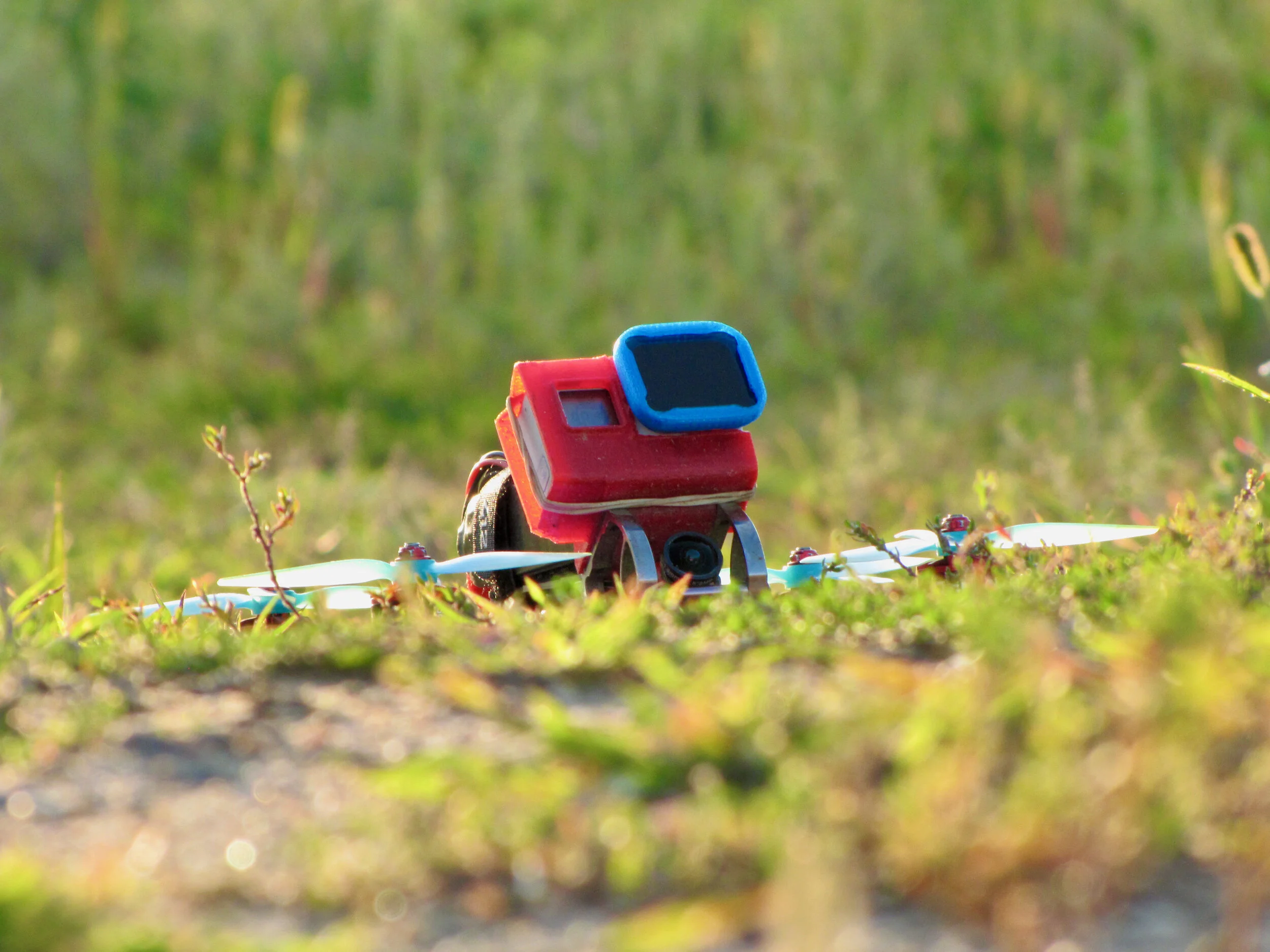Remote ID NPRM Response Guide
Deadline: March 2, 2020
The FAA has given us until March 2, 2020 to submit comments to the NPRM. Multiple groups have asked the FAA to extend that deadline but those requests have been denied by the FAA.
Create Your Comment as a Document
The form on the NPRM website has limited space for your comments but it also allows you to submit up to 10 attachments. We suggest you start working on your response by creating a document that you can attach to your comment. That way you will not be limited by the form and you can work on this document over time as you formulate your response.
Do Your Research
In order for you to submit the best comment possible, we suggest that you do as much research as you can starting with reading the entire Remote ID NPRM. We also understand that the NPRM is very long and complicated so we have prepared the following resources to help.
There are lots of other great resources out there to help you with your research. Consider checking out some of these as well.
Make It Personal
We believe that the most effective comments will be the ones that include a very personal story about how the hobby has improved your life. Keep in mind that the comments are public so don’t say anything you would not want the public to know, however the more we can show that this hobby and the community around it improves our lives the better. Tell the FAA about you, what you fly, where you like to fly, how often you fly, anything to help explain our hobby to them.
FPV Freedom Coalition Suggested Topics
We have confirmed with the FAA that copying and pasting someone else’s comment is not the most effective way to get you point across to the FAA. Our suggestion is to use these topics as a starting point to formulate a response using your own words. Wherever possible please provide solutions to the issues and concerns you have.
Amateur-Built
There is no reasonable way any of us could build our own UAS from parts like we do today and comply with standard or limited remote ID. Therefore something in this NPRM must change with respect to amateur-built UAS.Safety and Privacy Concerns
Publicly broadcasting the location of the UAS operator presents significant safety and privacy concerns. If you have been threatened while safely and legally flying your UAS already, then you understand how important this is. Consider sharing a time where you were concerned for your safety or how this change could compromise your safety in the future.Registration Concerns
Today recreational flyers only have to register themselves, not each individual UAV. Forcing us to register every UAV we own could be prohibitively expensive and does not increase safety, leading to mass non compliance. Consider making a case that spending $5 per UAS is unreasonable.FAA-Recognized Identification Area (FRIA) Concerns
The only location a UAS that does not meet remote ID requirements is allowed to fly is at a FRIA. A FRIA can only be requested by a Community Based Organization (CBO) within 12 months of this remote ID proposal being put in place. Thus they are designed to be temporary. Not only are there issues with a FRIA being temporary, but no FPV pilot wants to fly at the kinds of locations the FAA expects to become a FRIA. Not to mention many FRIA’s would likely require club fees, membership dues, and increased travel time. Let the FAA know why you fly, what locations you like to fly, and how being restricted to a FRIA would affect you. Perhaps we could use the LAANC system in uncontrolled airspace as a possible solution instead?
Costs
Many of us fly relatively inexpensive UAV’s today. The costs to manufacture remote ID compliant versions could represent a significant portion of the overall cost of the UAV. The FAA also expects everyone to subscribe to a Unmanned Service Supplier (USS) and pay a monthly/yearly fee. Let the FAA know that you are concerned about the increased costs you would be forced to pay to continue to enjoy your hobby.
Increased Regulations Stifle Innovation and Decrease Participation
As can be seen by the recent posts on Reddit, Facebook, and other locations, the mere proposal of these regulations have already caused some people to either drop out of the hobby or be concerned that they should not even bother getting started. This causes the hobby to have fewer people participating which leads to fewer companies investing time and money creating products for those consumers. In addition, having each aircraft approved by the FAA would likely increase the time it takes to get a product to market, slowing down innovation further. Consider letting the FAA know that you are concerned that this will negatively affect the hobby.Current Safety Record
Recreationaly flying UAS is one of the safest hobbies on the planet. Consider making a case that there is no reason for increased regulation on a hobby that has a proven track record of safety. Data acquired from a Freedom of Information Act request from the FAA shows there were 14 confirmed UAS related incidents in the period of 2013 through 2018. Within these 14 confirmed incidents there were no deaths and no crashes of manned aircraft. Using FAA data, there are currently over 1.3 million recreational UAS in the United States. Recreational UAS use is proven to be an extremely safe endeavor. We challenge the FAA to demonstrate why remote identification of UAS is required to ensure public safety and the safety and efficiency of the airspace of the United States.
Inaccurate Assumptions
The FAA assumes 93% of part 107 UAS and 20% of recreational UAS can be retrofit to comply with remote ID. They also state that the average UAS operator owns 2 aircraft with a lifespan of 10 years and an average cost of $313. Does that describe you? If not, let the FAA know how many you own, how much they cost, and how long you use them for, and if they can be upgraded to comply with remote ID. Assuming you have more than 2 and they can’t be upgraded, that shows the FAA that the costs to you as a result of this proposal are much higher than they are estimating.
Internet Connectivity
The NPRM requires all limited remote ID UAS to only fly if they can send their remote ID information across the internet, severely limiting the locations they can operate. Standard remote ID UAS are allowed to fly without internet access but only if it is unavailable in the location they are flying. If flying is OK if there is no internet connection available, then why require it at all? If you have concerns about the internet connectivity requirement, be sure to voice them.Shielded Operations
The US should be looking at what other Countries have done and how successful they have been. In the case of New Zealand, they have a rule called “Shielded Operations” where you are permitted to fly as long as the operation takes place below the height of the nearest trees and buildings because you are then not a threat to manned aviation. Perhaps the FAA could adopt a similar rule where anyone flying in a shielded operation would not need remote ID. If you do all or most of your flights at very low altitudes and would be covered by an exception like this, let the FAA know.Non-Compliance
Unacceptable regulations will result in mass non compliance. If you agree, then be sure to put something in your response that lets the FAA know. If there is little to no compliance with remote ID, then the whole remote ID proposal is a failure.Ready to Comment
At this point you should be ready to submit your comment. Click the button below to go to the correct website where you can fill out the form and attach your document.
What Else Can You Do?
Spread The Word
Don’t stop at sending in your comment. Spread the word. Stop by your local hobby shop ( if you have one ) and make sure they are aware of this proposed regulation. Make sure all your friends and family know about it.
Join the UFDA Crew Protest
On Feb 29th, 2020, the UDFA Crew has organized a protest in Washington DC. Check out http://www.helpsaveourhobby.com/ for more details.
Contact Your Representatives
Send a letter to your representatives letting them know how you feel about the remote ID proposal by the FAA. Especially if your representative is on the Transportation & Infrastructure Committee. More details on how to contact your Representatives coming soon.







